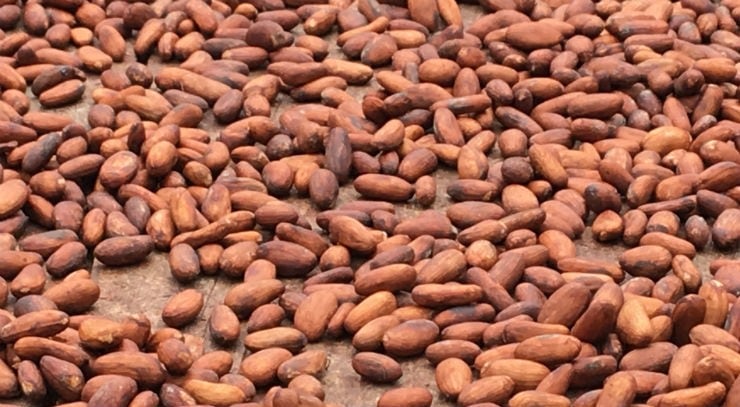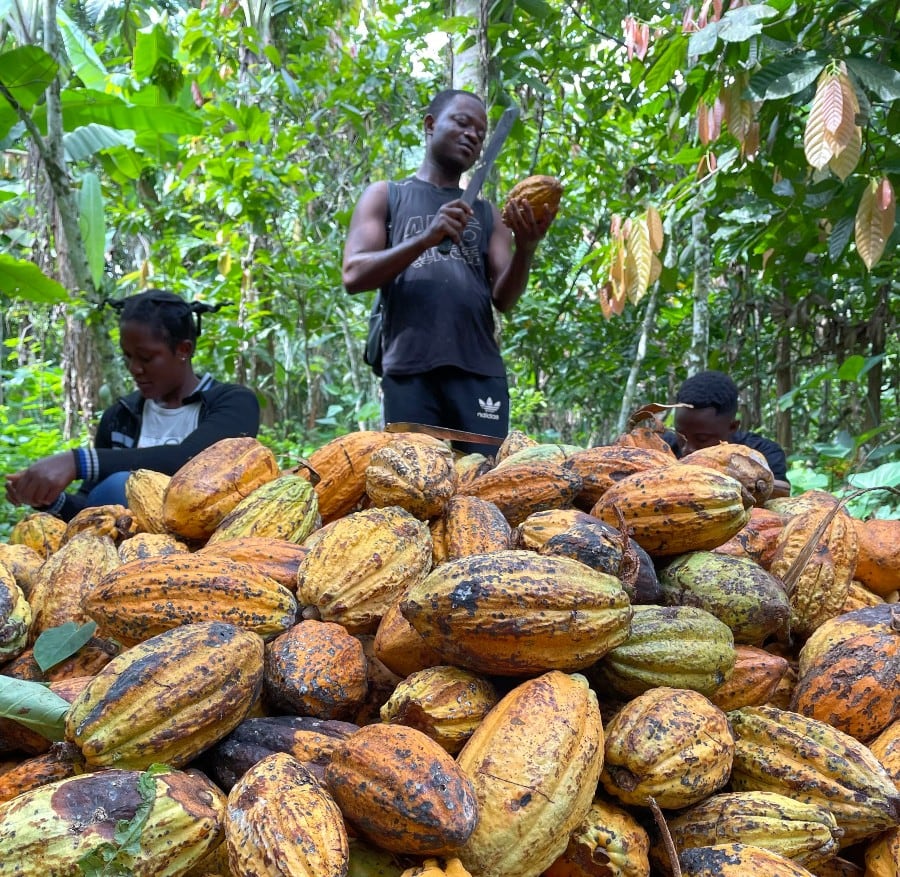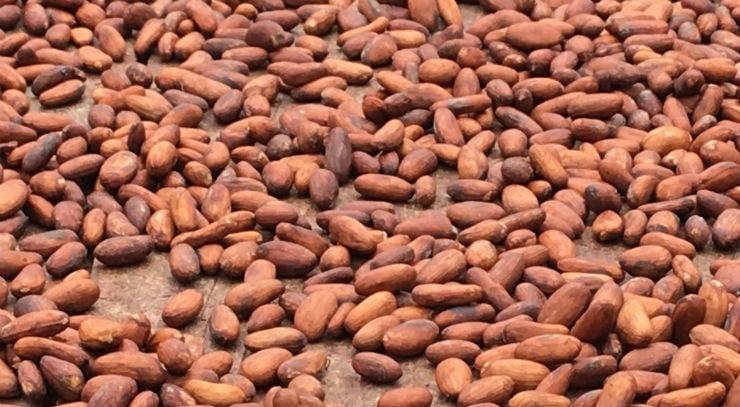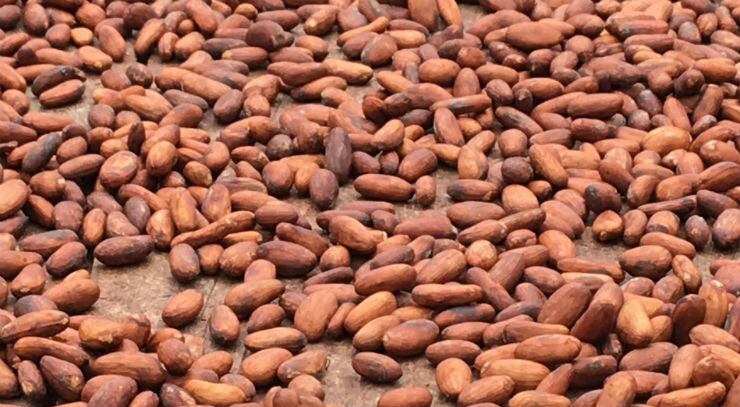Traceability, transparency, and sustainability are the three key enablers of a cocoa value chain that delivers, from the farmer to the consumer, and events like the recent European Cocoa Association’s Forum in Rome are consistently searching for the right solutions to bring the chocolate industry into the 21st century, especially in light of impending EU legislation that will, whether it likes it or not, hold the sector to account.
But what about the supply and demand functionality of cocoa? After all, it is a commodity traded on the futures market, bought and sold according to market forces. What are its drivers? And how can origin countries and consumers manage their impact on its market value?
To discuss this side of the business the ECA convened a panel of city experts and agricultural analysts to examine if realistically there is any chance of achieving price stability for cocoa.
Pamela Thornton, a commodity trader/consultancy, at Nightingale Investment Management said it is very difficult to keep prices stable, as all commodities have huge swings in prices, with big price rises in the 1970s followed by declining prices, for example.
She said that although tree crops such as cocoa and palm oil encourage longer term prices, other factors like weather conditions, political instability, notably the 1999 coup d'état in Cote d’Ivoire (which sent cocoa prices soaring by 400%), and also the Ebola crisis.
The current impact of the Covid pandemic is also affecting cocoa prices to a degree, as this publication has previously reported.
Thornton also said that financial support systems for certain crops in the 1980s and 1990s mostly failed. But can markets free from intervention do better?
The biggest producers [Ghana and Cote d’Ivoire] are also advocating that a living income for farmers [LID). But at the same time, they're taxing 20 to 30 percent themselves directly to the farmer -- Pamela Thornton, a commodity trader
“On the demand side of the equation, generally with cocoa, we have grown the market for chocolate pretty well, we have two and a half percent annual growth on a long-term basis. We have developed new markets, we've developed new products, we are using compound, which helps us market our products in countries, which don't have refrigeration, where the temperature is warmer,” she told delegates.
“Now we come to supply, this is probably quite controversial for a lot of people … but I see that the marketing and production haven’t really changed in 50 years and that includes the fact that way back when we used to get one call a week to Ghana and we didn't know what the prices were unless we were connected with the Reuters ticker in the office.”
She said that the trading community has encouraged the growth of production and encouraged the growth of processing. “They are two key policy objectives we followed and we have integrated cocoa into a larger agricultural picture,” she said. But the pay off, in her experience is in some cocoa growing regions there is evidence of poor land use and little infrastructure development.
“In 2005 physical cocoa represented, less than 10% of the amount of trading in cocoa globally, but by 2019, early 2020, around when Covid struck, we were close to 50 times the world crop as traded in financial derivatives.
“So effectively two percent of transactions are represented by what the origin [countries] sell, so that's hard for them to get their head around when they produce, 60-70 percent of the crop. But that's a fact.”
She said the result is a financially weak or poorly supported origin sector will provide a constant stream of forward, price cover to the industry. Even at low prices - and it's closely intertwined with politics.
“The biggest producers [Ghana and Cote d’Ivoire] are also advocating that a living income for farmers [LID). But at the same time, they're taxing 20 to 30 percent themselves directly to the farmer.”
She said the countries earn billions of dollars from taxing their cocoa sector – but it’s coming out of farmers’ pockets.
Farmers in both countries set a lower price than other origins countries and particularly when countries price in dollars, government cocoa bodies don't typically pass on the benefit of a dollar appreciation back to the farmer.
Her advice to traders at current price recommendations, is don't sell forward on a large scale, “because you are just giving industry a constant stream of a price cover for nothing and I would integrate a lot more risk and price management tools to bring their entities up into the 21st century”.
She was also scathing about coops, especially in Cote d’Ivoire, which she described as “not true coops, in the agricultural sense but a vehicle under which exporters pre-finance cocoa because otherwise there is no other internal way of farmers and local traders pre-financing cocoa.”
She said in the longer term the industry has to integrate and manage supply a lot better including encouraging farmers to grow other crops.
“Ivory Coast is a cotton producer so there are things that you could do there, for example. Or look at the excellent diversification examples in Thailand Vietnam, Indonesia and Malaysia.”
Futures market
Jonathan Parkman, Joint Head of Agriculture, Marex Financial, drilled down deeper into the futures market and said the past 50 years has been incredibly important in providing effective, risk management while providing effective price discovery.
“If we lose a method of achieving, both of those things, then we are going to have to come up with an alternative. And the question is, is there one available?”
The market is constantly looking for warning signs of trouble and will also react when “things are sailing along nicely”, he explained.
He said up until the introduction of the LID in 2019, the market was sailing along with relatively static differentials until it saw an incredible jump caused by the imposition of the LID.
“One of the things we can we conclude from that is any physical trader buying forward is being asked to take an extremely large risk to any they had to take over the last 20 or so years.
“The number of spikes and the regularity of those spikes in latter years has become a great deal more frequent, suggesting that there is a bit of a problem with physical convergence during the time of LID and is another warning signal that we have a problem with maintaining the relevance of futures market during a period of LID,” he said.
He told the Forum that there's been a very large decline in certified stocks as measured by ICE [New York Futures Exchange].
“But in recent years, it has really been relatively stable. During the period of [the introduction] LID there was a reduction in terms of stocks, but it is kind of stabilized at that period…”
The futures market is still relevant, but the risks to us going forward should not be underestimated and there's a huge amount of work that is going to have to be done to cope with future legislation and the LID
“Legislation is coming, there's nothing we can do about that,” he said. “I completely understand why the producing countries need some form of stable income. That is a very laudable thing, but whether everybody would support the current method to achieve that is a very, very different question.”
As the Forum heard, the 1970s were a period of unsustainable prices, that encouraged consumption and overproduction that inevitably led to the market moving to more sustainable prices in the 1980s.
Climate events like El Nino devastating West African crops for two consecutive years in the 1980s caused prices to rally accordingly because of weather-related shortages.
Buffer stop
Steve Wateridge, Head of Research, Tropical Research Services, said a buffer stop was introduced but the problem was the price set was too high and the buffer stock filled up.
“It also helped keep prices up for a number of years at which point inefficient producers were encouraged to enter the market, particularly in Asia.
“Eventually the buffer stop collapsed. They ran out of money. They had to liquidate the stock but also they encouraged these inefficient producers who stayed beyond their welcome date. And that led effectively to 10 years of low prices – and was an absolute disaster,” he said.
How best can origin and consumers manage their impact on market value? He asked the Forum.
“Of course if prices don't stay where they are there’s a very big speculative community, who appreciate price fundamentals and that speculative involvement produces an early price signal that allows consumers and producers to respond and prevent a doomsday scenario of running out of cocoa.”
“If you have a support price, that is too low it's irrelevant because supply and demand will push prices above that. If you have a support price that is too high you create problems for yourself because you encourage surplus production, you discourage demand, and you encourage the production of the inefficient producers.
“Even if you could persuade every single consumer to pay a higher price because they see that's the fair price you still got surplus because you're still encouraging, producers to come in and produce more - and this is what happened with Malaysia,” he warned.
He also explained that South American countries such as Ecuador growing more and are reasonably efficient producers, “but if you start introducing support prices that bump up prices too high you will get them increasing production, even further, which is a fundamental flaw of these price support mechanisms.”
Boubaker Ben-Belhassen, Director of Markets and Trade Division, UN Food & Agriculture Organisation, said 500 million households worldwide depend on the cocoa sector, many of which are in countries with low per capita incomes.
The fluctuation, or wide fluctuations in prices, from one year to the other brings a lot of uncertainty in terms of revenues to those families. He said what is needed is to find a global arrangement to stabilize the markets, to stabilize incomes, and to stabilize prices.
“Smallholder farmers need a living income, and this requires coordinated global action,” he said. “We have to be not only looking at the production side but also at the demand side for this arrangement, to succeed, there are some number of conditions that need to be satisfied. Producer-only agreements have not achieved their intended objective, and the issue of transparency is very strong on market conditions and prices are very important,” he said.




